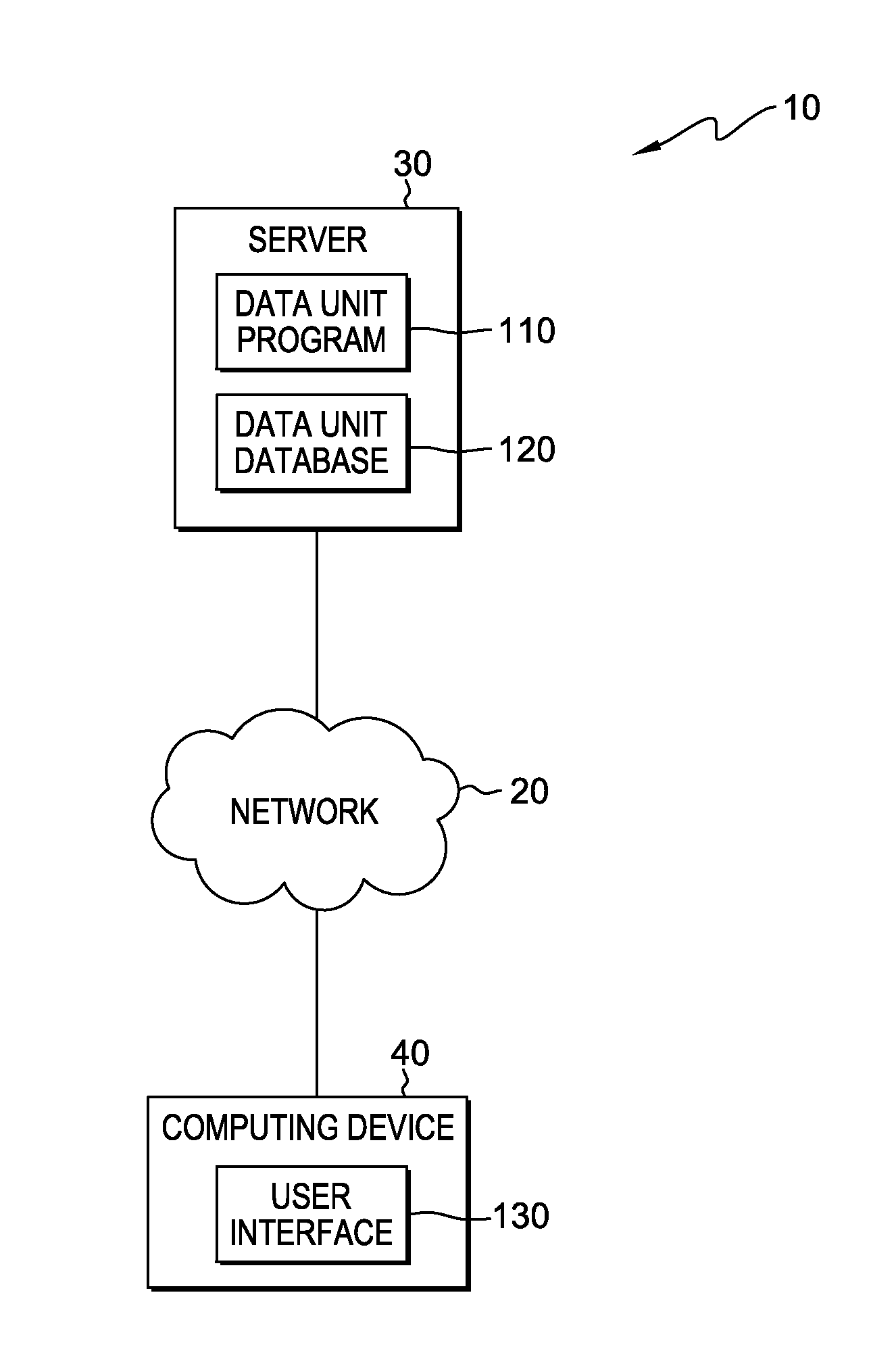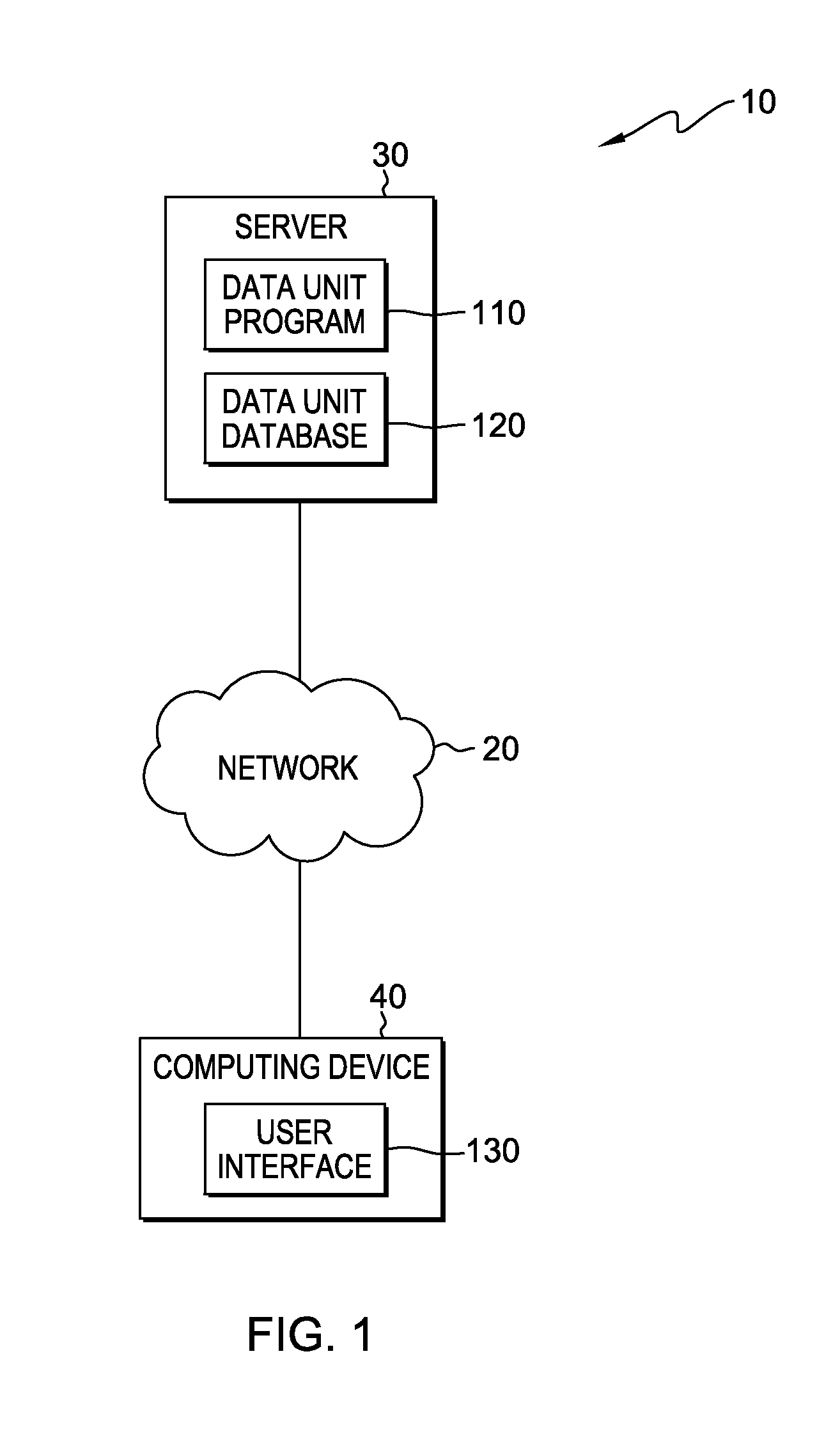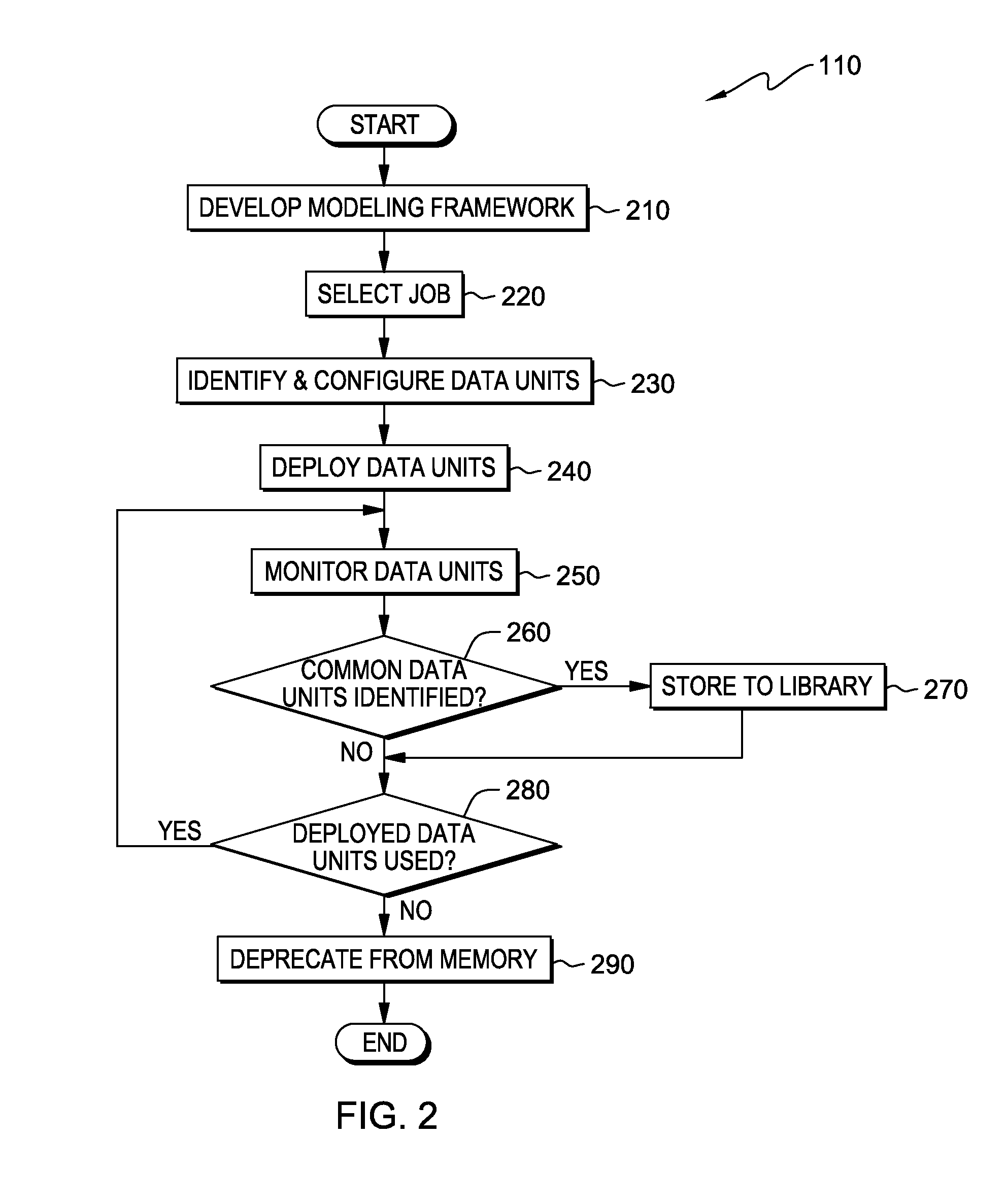Model-Based Design For Transforming Data
a model-based design and data technology, applied in the field of big data, can solve the problems of difficult data processing using traditional data processing applications, difficult work on big data, and frequent complicated mapping of data element to data elemen
- Summary
- Abstract
- Description
- Claims
- Application Information
AI Technical Summary
Benefits of technology
Problems solved by technology
Method used
Image
Examples
Embodiment Construction
[0013]The big data paradigm involves characteristics such as volume (i.e., the amount of data), velocity (i.e., the speed of data in and out), veracity (i.e., the quality of data), and / or variety (i.e., the range of data types and sources) of data. The relative importance of each of these attributes in data processing varies across businesses and industries.
[0014]While offline and / or batch processing still applies to many data types, embodiments of the present invention recognize that there is an increasing need in industry to process vast quantities of data at, or near, real time velocity. Regardless of the data types or the speed of processing requirements, current solutions do not provide a model-based design at the data unit level. A data unit is a portion of data of a particular data type, for example primitive data types or composite data types. For example, when mediation or transformation needs to be performed on structured, unstructured, and / or semi-structured data, the dat...
PUM
 Login to View More
Login to View More Abstract
Description
Claims
Application Information
 Login to View More
Login to View More - R&D
- Intellectual Property
- Life Sciences
- Materials
- Tech Scout
- Unparalleled Data Quality
- Higher Quality Content
- 60% Fewer Hallucinations
Browse by: Latest US Patents, China's latest patents, Technical Efficacy Thesaurus, Application Domain, Technology Topic, Popular Technical Reports.
© 2025 PatSnap. All rights reserved.Legal|Privacy policy|Modern Slavery Act Transparency Statement|Sitemap|About US| Contact US: help@patsnap.com



